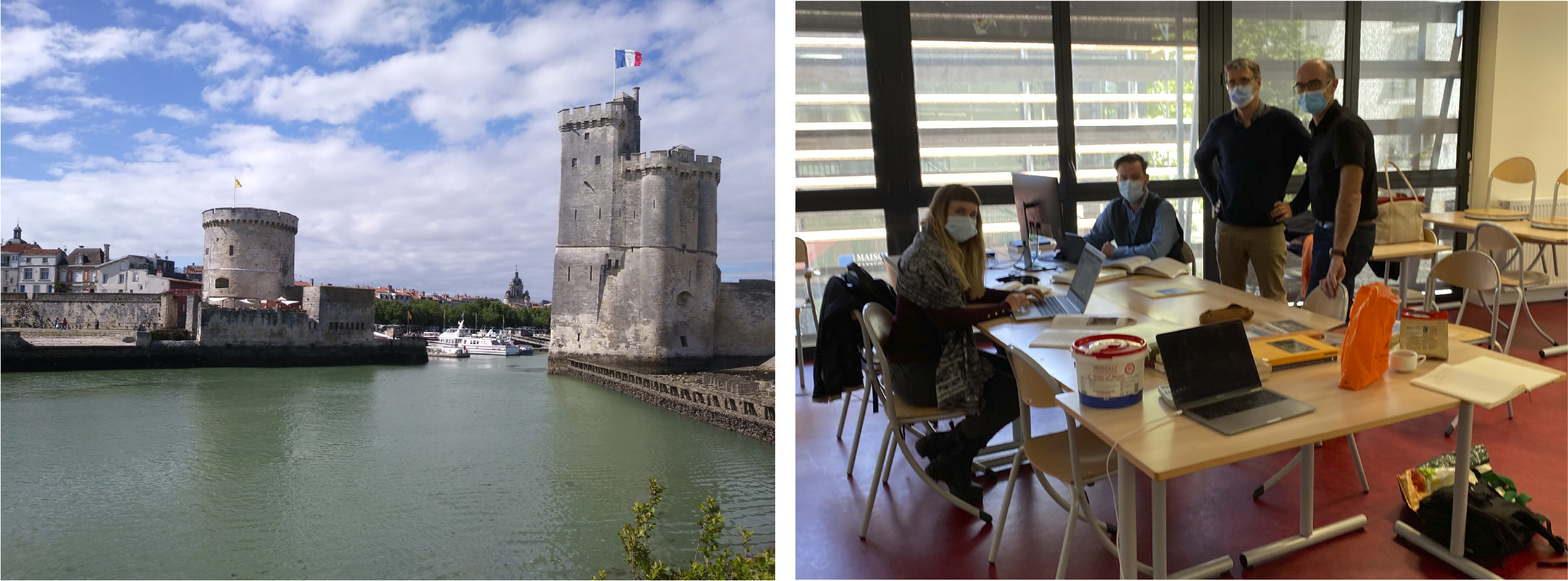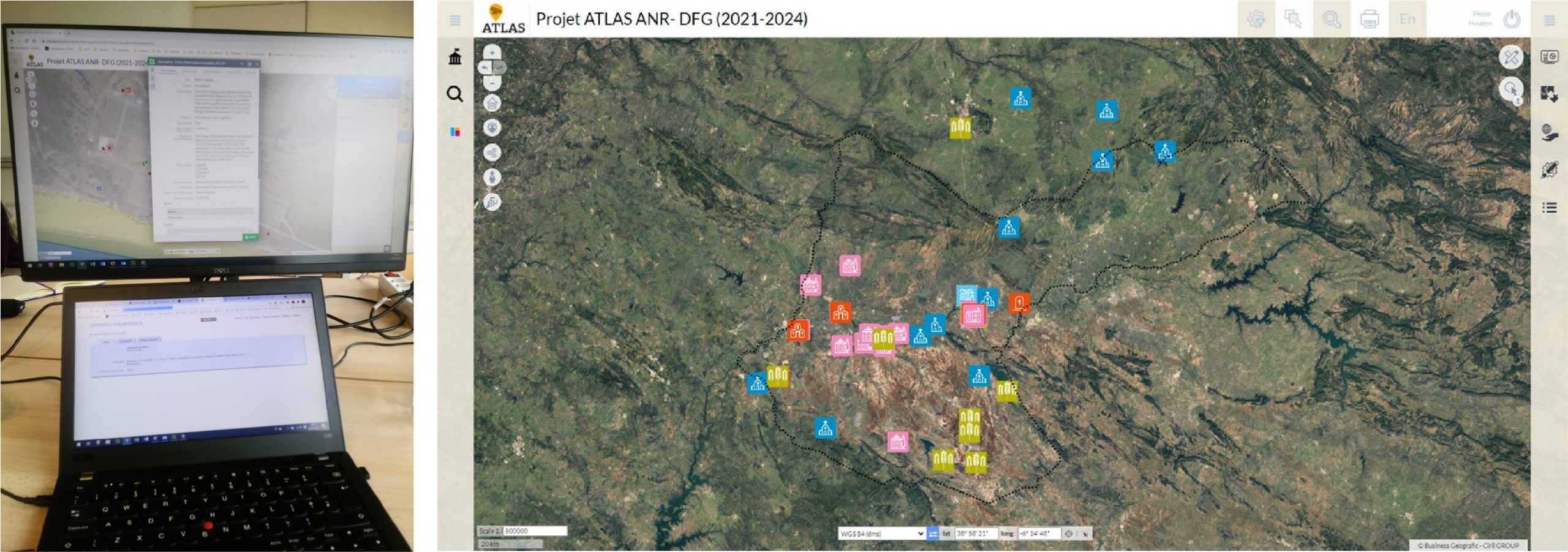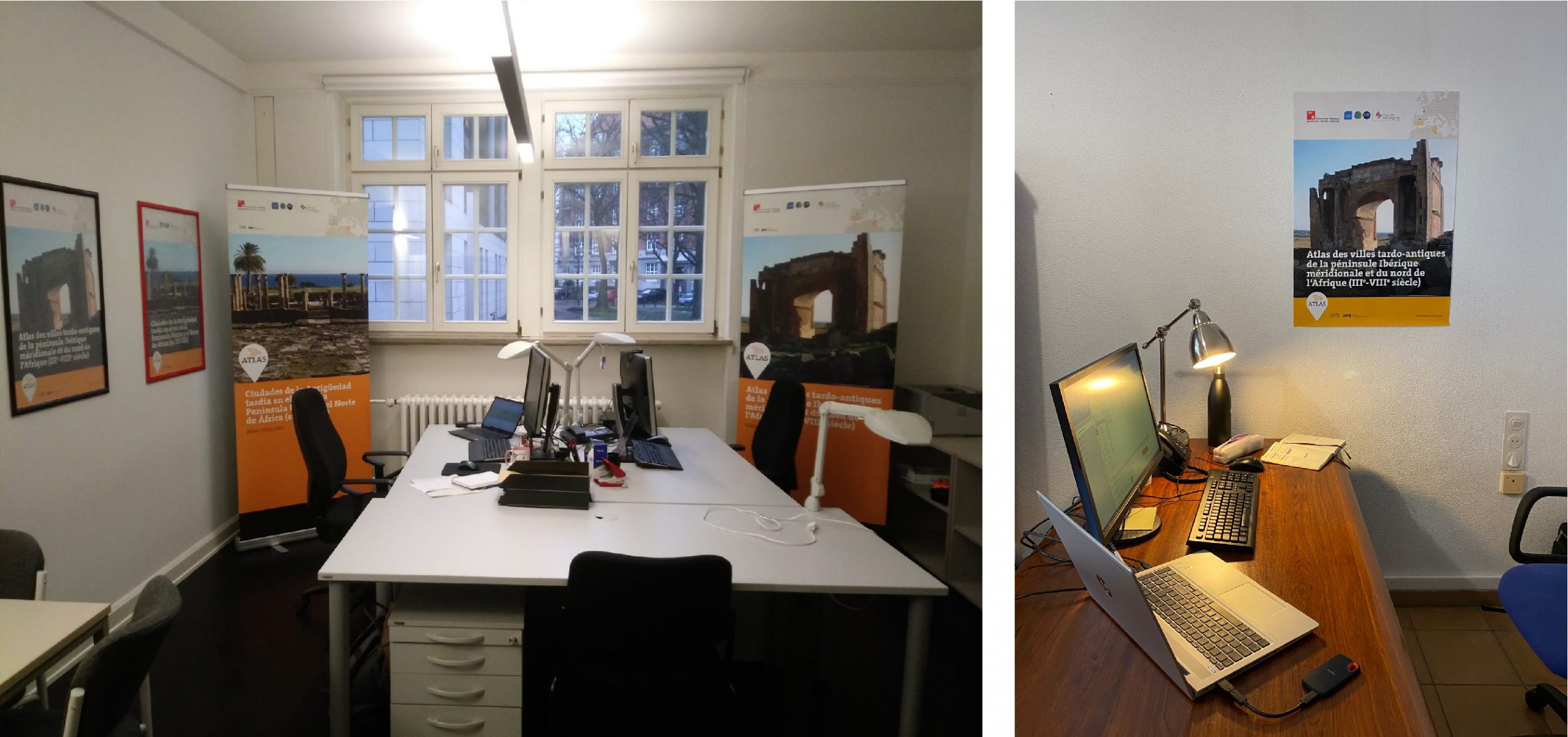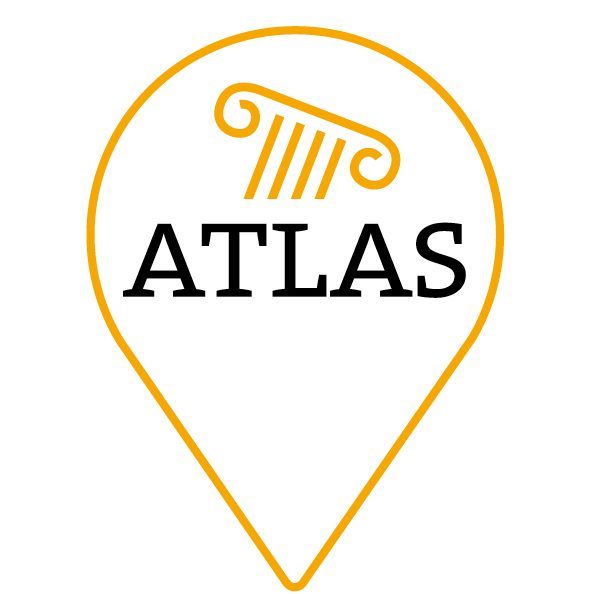It seems only yesterday that we published our first blog, but it is most certainly not, it has been almost nine months! Time flies by when you are dedicating your time to a subject so grappling as the phenomenon of late antique urbanism and, it seems impossible that 2021 ends in a few weeks.
Since the start of the project last April we have done quite a bit. It was at this blog that we informed you of our first (digital) meeting between Sabine, Laurent, Pieter and Ada. The pandemic situation forced us to postpone a first real life meeting with all project members in the Casa de Velazquez, but (spoiler alert) fortunately was organized a few months later. The project got really on the road with our WebGIS meeting at the university of La Rochelle. This was the moment we had the opportunity to get to know each other and find out how to communicate. As you might have read in May, this meeting was a true linguistic immersion.

During the meeting in La Rochelle, we debated the definitions and categories of the different elements to include in our WbGIS, we also established that we had three months for each case study. This gives us 30 months, which allows us to finish just before the end of the project. As we were already a few weeks into the project, we decided to study Baelo Claudia in six weeks. At that time it seemed quite a challenge, little did we know… We have studied Baelo and in the process we got the hang of our WebGIS.

Subsequently, in July we were able to present our progress with GIS for a large group of our members. As we said, the official launch of the project in the Casa de Velazquez had been postponed. Finally, we could have a hybrid launch on the 12th and 13th of July. It was a great opportunity to get to know the members of the project and debate the database, as well as the different research lines of the project. As such, we created various research groups that have been working since then in specific subjects to advance the study of cities in late antiquity in North Africa and the south of Hispania.

Through an autumn busy by running from conference to conference, and after 15 weeks of work, we are at the point of almost finishing the second case study: Mérida. Now we can certainly state that studying Baelo and her Late Antique history in six weeks is a lot easier than studying Mérida. During our research visit last september we were already made aware that Mérida had much to give. Nonetheless, the amount appears to be overwhelming, and then we know about unpublished materials, which we hope will see the light soon. In January we aim at writing a short overview of this amazing city and close the chapter before starting a new one in the new year.

Most likely our next case study will be as challenging as Mérida: Carthago. With our first case study in Tunisia we hope to get some help from our colleagues to locate the most important reference works and hit the ground running. One thing that certainly will keep us busy in January is our second ATLAS meeting in Hamburg from the 24th to the 26th. Keep posted by following our Social Media (Twitter and Facebook) for more information!

